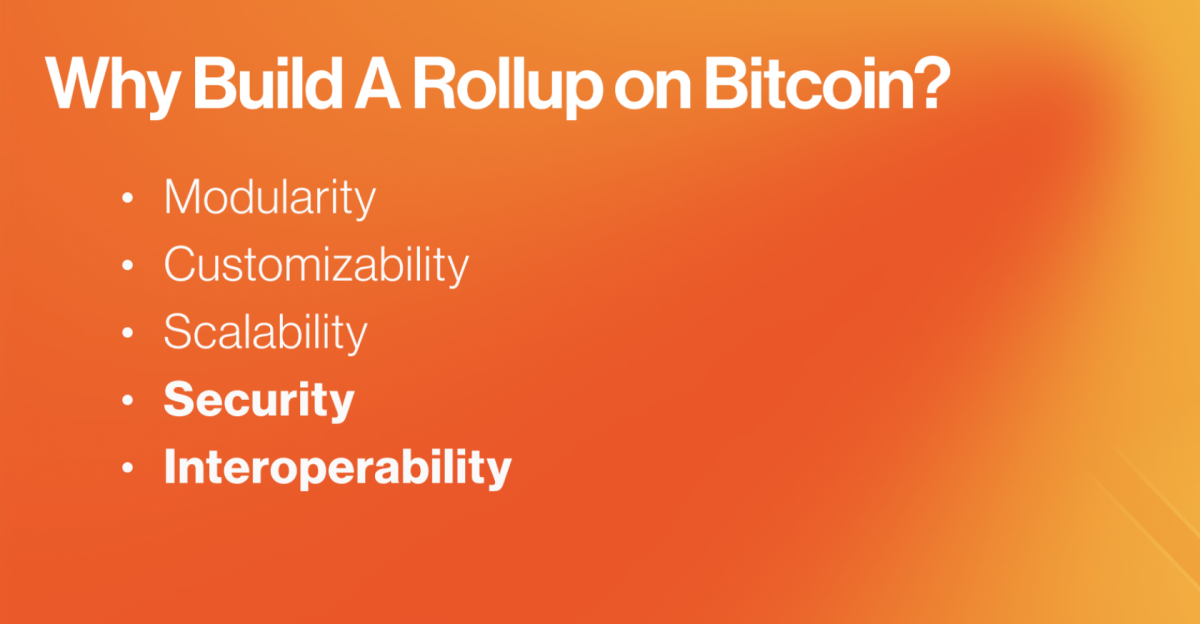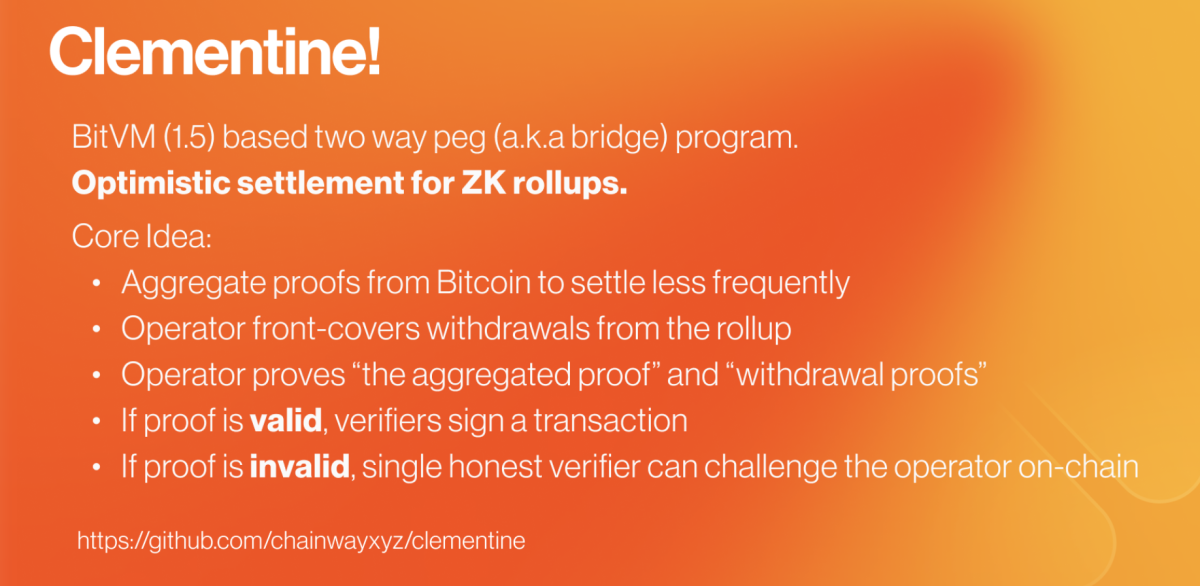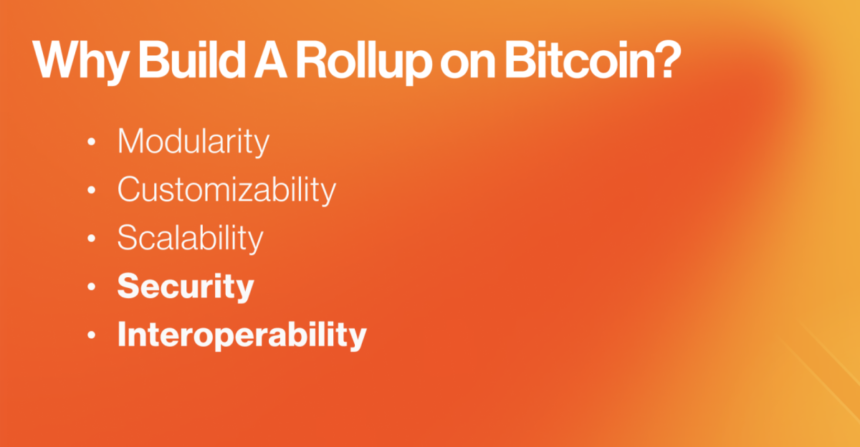Bitcoin & Beyond roll up It focuses on a new class of builders in the Bitcoin ecosystem, aiming to provide deep technical insights into innovative scaling projects through spaces, panels and interactive presentations.
In this episode, the crew discusses building Bitcoin’s first ZK (zero-knowledge) rollup. Orkun from CitreaRollups are an emerging technology that promises to enable a variety of scalability improvements, enhancing Bitcoin’s utility while maintaining the security of Bitcoin’s infrastructure.
“A rollup is a blockchain that uses another blockchain as a data availability layer,” Orkun emphasizes.
While many other factors are taken into account in rollup design, he believes they shouldn’t be part of the definition: “Where does settlement fit? Is it bridging? Is it ZK? Is it optimistic? Is it the execution layer? It doesn’t matter.”
The motivation behind Citrea

Citrea’s motivation for building zero-knowledge rollups on Bitcoin is Bitcoin’s unparalleled security and censorship resistance. Despite these strengths, Bitcoin has limitations in block size and scripting capabilities. Orkun said, “What you can do with Bitcoin is currently very limited beyond simple payments. We want to use Bitcoin’s block space security to do much more.”
Overcoming Bitcoin’s limitations through modularization
Citrea seeks to address these limitations through modularity. By building rollups, developers can customize the stack to create different applications such as payment rollups, gaming rollups, EVM rollups, and more. This flexibility allows for a variety of optimizations that can extend the blockchain without changing the core protocol. Combining different services creates fertile ground for experimentation that wasn’t possible before.
Security is paramount for Bitcoin and the layers built on top of it. “Building rollups is the only way to actually achieve security. Unless you’re building channels like Lightning or Mercury, these are limited by the capabilities of Bitcoin.”
Citrea’s innovation is to use Bitcoin as a data availability layer. Thanks to historical changes such as SegWit and Taproot, developers are finding new ways to write data into Bitcoin transactions. This makes it possible to use Bitcoin as a data availability layer for rollups. “This means that you can publish data in Bitcoin, but that data is never run on the blockchain and can be anything,” Orkun explains.
Using Bitcoin for data availability comes with a trade-off: it guarantees high security, but may not be suitable for high-speed, low-cost applications. “If you want the full security of Bitcoin, you should use Bitcoin as a data availability layer. However, for high-speed, low-cost applications, other layers such as Celestia may be a better fit.”
Clementine Bridge

To move bitcoin in and out of the system, Citrea built Clementine, a BitVM-based two-way peg that optimistically validates ZK proofs. This mechanism aggregates proofs from Bitcoin, reducing the need for frequent settlements and increasing security. “We inscribe these proofs into Bitcoin every hour, and other rollups can read the proofs from there and act on them,” Orkun explained.
The evolution of BTC bridges has seen them move from custodial bridges and federated threshold bridges to the more modern cryptoeconomic security bridges. Federated bridges rely on majority votes within a committee, while cryptoeconomic bridges like Stacks and tBTC use staked assets to ensure security. Orkun elaborated, “In cryptoeconomic security, you’re still trusting a federation, but these people are actually staking other assets. If they steal your money, you can cut that asset.”
But Clementine takes this a step further: it uses an optimistic approach inspired by BitVM to verify cost-effective and secure ZK proofs, which allows for the aggregation of proofs, making the process efficient and scalable.
The core idea behind Clementine is to provide optimistic settlement for ZK rollups. “We just aggregate proofs of concept from Bitcoin to make settlement less frequent, because we can’t settle every block, which is costly,” Orkun explains. By periodically writing data and aggregating proofs, Clementine ensures that the state remains accurate and secure.
To achieve this, an operator first funds a user’s withdrawal request out of their own pocket, then compiles the necessary proofs and submits them once to the network. If other operators suspect fraud, they can dispute the submission. If the dispute is successful, the fraudulent operator loses their initial security deposit and is removed from the network. If the operator’s submission is not disputed, the operator can recover an amount equal to the amount paid from the user’s original deposit.
This setup introduces the trust-minimized assumption that only one participant needs to be honest to ensure security: “We call it trust-minimized because this 1/N assumption holds. As long as one of these N people is honest, your money is safe,” Orkun emphasized. This is a significant improvement over traditional models that require majority vote for security.
Future plans and ecosystem impacts
Going forward, Citrea plans to introduce volition, a hybrid model that combines on-chain security with off-chain cost efficiency, allowing applications to choose how to store data based on their specific needs. Orkun also emphasized the importance of transaction fees to Bitcoin’s long-term security, and Citrea’s use of Bitcoin as a data availability layer helps incentivize miners and maintain network security.
“So depending on your usage, if you’re rolling out a gaming application right now, you can use off-chain data, which is very cheap and fast, but you still maintain bitcoin interoperability. If you’re building a bitcoin-backed stablecoin application, you can use on-chain data, so your stablecoin is fully secured on-chain and fully secured in bitcoin. It’s a little more expensive, but you still maintain interoperability between your gaming application and your stablecoin application.”
Combining the durability of Bitcoin with the flexibility of rollups allows us to push the boundaries of what is possible with Bitcoin. Citrea’s To find out more about their work, check out their website here and follow our Bitcoin & Beyond series. roll up Learn more about the current state of evolution of Bitcoin scaling solutions.







